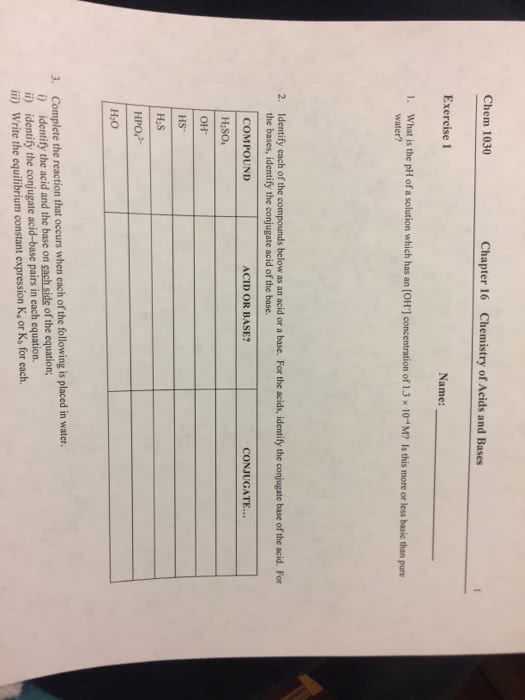CAM202 Lecture Notes - Lecture 1: Conjugate Acid, Equilibrium Constant, Acid Dissociation Constant
Document Summary
Acid: an acid is a substance that is capable of releasing a proton, a hydrogen/proton donor, example: hcl h+ + cl- Base: an base is a substance that is capable of accepting a proton, a hydrogen/proton acceptor, example: hco3- + h+ h2co3. Conjugate pairs: acids and bases are found together and exist as conjugate pairs, h2co3 hco3- + h, normally written as ha h+ + a-, where ha is the br nsted-lowry acid, and. A- is the conjugate base (proton acceptor: a measure of the concentration of hydrogen ions (h+) ph, calculated as log[h+, as ph = log[h+], [h+] = 10-ph. Strong and weak acids and bases: a strong acid, such as hcl, dissociates fully in solution, a weak acid partially dissociates in solution: In a reaction such as the one above, the reaction reaches an equilibrium where some of the acid is present in its original form (h2co3) and some as the conjugate base (hco3-)




